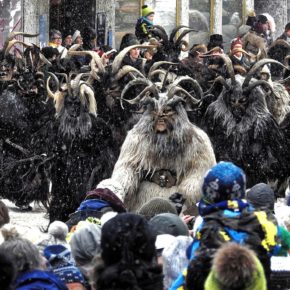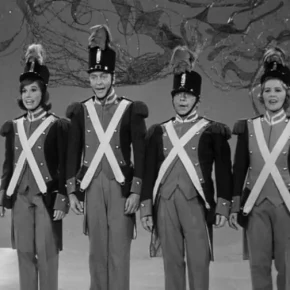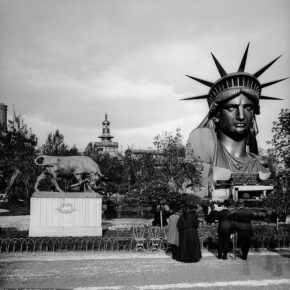 If there’s one thing that creates heated debates among the road cycling set, it’s aerobars.
If there’s one thing that creates heated debates among the road cycling set, it’s aerobars.
You know: the things that all triathletes use, the bars that likely made the difference in Greg LeMond’s 1989 Tour de France win?
The thing is, I love the concept: being able to cheat the wind, remaining aerodynamic on your bike while still having control over your ride. If setup and used properly, aerobars can be quite the perk.
But it seems the most of the riders I ride with who have aerobars simply don’t know how to properly use them.
For example: on a recent PPTC ride, I was with a small group, one of whom was on a slick Kestral Airfoil triathlon bike, replete with graphite wheels and aerobars. The rider raced a lot of triathlons, and uses PPTC group rides for speed training – all well and good.
However, whenever she took the lead in our paceline, she’d drop into her aerobars and would slow down at least 5 miles per hour. It’s like she’d downshifted a gear and slowed down accordingly, and it became frustrating. I don’t think she realized that she was faster in the “horns” than on her aerobars, but she kept on resorting to the aero position at all times.
The remedy is to learn the proper technique for using the bars, both in terms of riding and in terms of position on the bike. In the case of riding, the key is to up your cadence in the same gear. As the aero position gives less wind resistance, it’s best to take advantage of the situation and gain speed, exerting the same effort. Like other triathletes with whom I’ve shared rides, my fellow rider doesn’t seem to see the time trial aspect of triathlon rides, and isn’t trying to milk all the speed and efficiency out of her setup.
The big deal here is getting the most out of your pedal stroke. All of the best triathletes and tiam-trialists tends to spin their gears at a high cadence – at least 90 rpm – with a smooth spin. This is not an easy techique to get, at first, as mashing on the downstroke defeats the purpose of a spin. The whole idea is to use both the downstroke and the upstroke of the pedal motion to gain power – basically, there shouldn’t really be any fully “dead” area in the movement of the pedals. Spinning is a key technique to climbing hills on a mountain bike: you want a smooth, even application of torque to the wheels to prevent the rear tire from washing out. So it might be a good move to dig out the mountain bike, find a good, steep-ish dirt climb, and try some high-cadence spins.
Then again, it could also be that my riding partner’s aero setup wasn’t very good, which is also typical of many folks who run aerobars. Granted, on many road racing and touring bikes, it’s nigh-on-impossible to get an ideal aero position without a lot of modification: lowering the stem/handlebar height, moving the saddle forward and up a tick, etc. This kind of modification is not without its risks, as it also reduces the comfort level of the bike, and can wreak havoc with bike control and handling.
But on tri-specific bikes (or time-trial bikes), the setup is usually configured for ideal positioning, provided that the rider actually gets the position worked out. And the ideal position is typically:
- upper back flat (perpendicular to the road)
- elbows slightly in front of shoulder axis
- forearms flat or aimed slightly down
- seat forward (on road racing bikes)
 Ideally, it’s akin to an alpine ski racer’s tuck – in fact, that was the point of origin for Boone Lennon’s first Scott aerobars, which were used by LeMond in 1990 (and by Lance Armstrong in his triathlon days). And the above picture of Levi Leipheimer – a former alpine ski racer who is now one of the best cyclists in the world – shows this ideal technique in practice.
Ideally, it’s akin to an alpine ski racer’s tuck – in fact, that was the point of origin for Boone Lennon’s first Scott aerobars, which were used by LeMond in 1990 (and by Lance Armstrong in his triathlon days). And the above picture of Levi Leipheimer – a former alpine ski racer who is now one of the best cyclists in the world – shows this ideal technique in practice.
Unfortunately, this isn’t the most comfortable position for most riders, as it requires a strong back and neck, as well as the ability to pedal with strength when there is a lot of break at the waist. I see a lot of riders with aerobars setup so their chest is scooping air, which isn’t much more aerodynamic than being in the “horns” or in the drops on standard road bars. Sure, it gives the rider another position, and might be good for a rest; but there’s no real efficiency advantage to riding with aerobars if there’s little aerodynamic benefit.
A proper setup is not easy to do alone: it often helps to have a buddy (or, better yet, a professional bike fitter) get the position dialed in. And it won’t feel comfortable or efficient, at first. It’s not unreasonable to feel discomfort (especially in the lower back and glutes), or to feel like the bike is a bit twitchy (more weight over the front wheel axis, combined with a steeper seat angle, cause this sensation). But the payoff of getting the right position and using the right pedal technique is ideal: low drag, high speed, tons of power.
So check to see which is faster: try a 1/2 mile stretch of mostly-flat roads and run a time trial. Do one “lap” in the horns, drops or hoods, and do another in aero position. See which is faster. If the aerobars are faster, you’re on the right track. If the drops/horns/hoods are faster, your work is cut out for you.













Comments by randomduck
virtual advent 2020: a fab holiday (and it’s been 40 years…)
@compassionknit: I think the issue is that John had Julian ...
ten on tuesday: the music died too young
Good call on those three!
my 30s: a look back
Thanks, Darren and Jeff! Jeff, riding along the California coast with ...